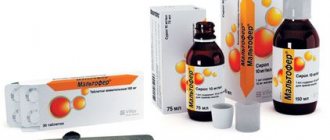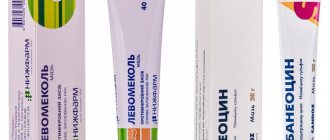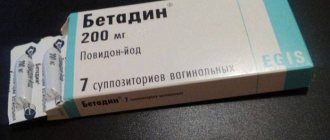Asparkam is a drug that belongs to medications that help regulate metabolic processes. With its help, the patient can restore electrolyte balance and regulate cardiac activity.
Before purchasing and starting to take it, read the instructions for it and consult a doctor, since taking Asparkam simply for prevention is dangerous. Before starting treatment, you need to make sure that there is a lack of potassium in the body.
This is a highly absorbable drug . Asparkam is excreted from the body by the kidneys. An overdose is possible both with too rapid administration of the drug and with a significant increase in the recommended dose.
This medicine is able to regulate electrolyte balance by improving the penetration of potassium and magnesium ions into the space between cells.
Its action reduces the conductivity and excitability of the myocardium, so Asparkam can be classified as an antiarrhythmic drug.
It also reduces sensitivity when taking glycosides.
Composition of Asparkam
You can purchase Asparkam in the form of flat tablets or a solution for injection in ampoules of 5 and 10 ml.
It contains only two active ingredients:
- Potassium, which ensures the conduction of nerve impulses, has a diuretic effect and contracts muscles.
- Magnesium is involved in enzymatic reactions, in the movement of ions, as well as in cell growth processes.
The tablets contain 175 mg of each component. In addition, the composition contains corn starch, polysorbate-80 , talc and calcium stearate.
The principle of action of the drug is based on the ability of magnesium and potassium ions to penetrate inside and participate in metabolism. The dosage of the drug depends on age, symptoms of the disease and course of treatment. Most often it is determined by a doctor.
The medicine is also used for children. In this case, the drug is prescribed from the age of three. You should not self-medicate or prescribe it yourself, especially to a child.
There are different forms of the drug, for example Asparkam Avexima.
conclusions
In therapy, cardiology and transfusiology, solutions of potassium and magnesium aspartate are used to compensate for the deficiency of K+ and Mg2+ cations. The drug "Asparkam" is indicated for the correction of electrolyte imbalance in laboratory-confirmed hypokalemia and hypomagnesemia. Rational use of the drug in accordance with clinical need and the individual needs of the patient minimizes the risk of adverse reactions and overdose with a life-threatening condition.
Properties of Asparkam
Let's find out more information about the properties of the medicine and for what diseases it is taken. Asparkam is effective for many diseases.
Potassium and magnesium ions help restore heart function after myocardial infarction. It is also prescribed in combination with other components to stimulate cardiac activity. Potassium in the drug helps:
- muscle contractions;
- normalization of heart function;
- decreased myocardial excitability;
- expansion of the coronary arteries;
- the passage of nerve impulses along the fibers.
Magnesium is involved in various enzymatic processes, and also takes part in the synthesis of necessary acids and cell division. The drug is prescribed for coronary heart disease, glaucoma and high intracranial pressure.
It is indicated for improving metabolic processes and muscle growth. Therefore, it is often used in bodybuilding.
Compatibility
It has a different focus. From a pharmacodynamics point of view, combination with diuretics, beta blockers, cyclosporines, NSAIDs, heparin stimulates the development of asystole and arrhythmia. The combination with hormones stops this situation. Potassium ions reduce the negative effect of cardiac glycosides. Magnesium ions – neomycin, streptomycin, polymyxin. Calcium reduces the activity of magnesium, so such drugs must be combined with great caution, according to health indications.
Pharmacokinetics warns about the incompatibility of Asparkam with astringent and enveloping drugs, since they reduce the absorption of the drug in the digestive tube and recommends, if necessary, maintaining a three-hour interval between doses.
Who is it shown to?
According to numerous reviews, it is taken when there is a lack of magnesium and potassium in the body. Let's find out what the medicine's indications for use are:
- Violation of metabolic processes.
- Magnesium and potassium deficiency after significant fluid loss. This happens with diarrhea, severe vomiting, prolonged dehydration, and excessive sweating.
- Long periods of use of diuretics and laxatives. Asparkam is often prescribed along with a drug such as Furosemide, which removes potassium from the body.
- Heart problems, including angina pectoris, arrhythmia, pre-infarction conditions, heart failure.
- Shock states.
- The occurrence of edema.
- Urolithiasis. It is even used to dissolve stones.
- Protects against complications that may occur after prolonged use of glycosides.
- Pathologies such as glaucoma, gout and inner ear disease.
For prevention of stroke, the drug is prescribed simultaneously with the drug Diacarb .
Is it possible to drink Asparkam every day all the time and how does this drug work in the body?
Is it possible to drink Asparkam every day and all the time? Experts answered media representatives. In international terminology, the drug is called magnesium and potassium aspartate. It is able to quickly restore the lack of vital components in the human body, normalize their electrolyte balance and strengthen the heart muscle.
Why do you need to take Asparkam tablets every day and constantly?
The human body consists of many elements that are presented in the periodic table. The ratio in which they are found in the body affects its vital functions. The same applies to potassium and magnesium in the body, that is, without these components the body will not be able to function normally.
The balance of water and salt in the body depends on the content of potassium and sodium in the body. For this reason, potassium-containing drugs should be used with extreme caution. After all, an excess of potassium can upset this very balance, and this can lead to the most unforeseen consequences.
Potassium is involved in the transmission of impulses from nerve endings, and the state of the heart muscle largely depends on it.
If the potassium content in the body is insufficient, this can cause the development of cardiovascular pathology, and this in some cases even ends in the death of the patient.
If a person has an imbalance of magnesium and potassium in the body, this can lead to hypertension and sometimes stroke. Magnesium transmits nerve impulses, takes part in energy production, and also synthesizes protein. Even by the width of the lumen and the tone of the tissue in the muscles, one can judge how much magnesium is contained in the body.
Magnesium has a sedative effect and is often used by neurologists and psychiatrists. Therefore, the use of magnesium should be careful, especially in cases where it is necessary to concentrate.
Pharmacokinetics and administration of Asparkam every day and constantly
The effects of the components of Asparkam on the body occur jointly. With the help of magnesium, potassium is better absorbed and maintained at the cellular level in the required concentration.
For this reason, there are two active components in Asparkam.
Aspartate is a drug that can provide the body with magnesium and potassium ions that penetrate the cell membrane and reach the intracellular space.
Potassium and magnesium salts exist in a wide variety, but only aspartic salts can effectively cope with the task of delivering magnesium and potassium ions to the human body.
About pharmacokinetics
Pharmacokinetics refers to the processes that occur with a drug after it is introduced into the body. Regarding Asparkam, we can say that it is well absorbed and excreted through the gastrointestinal tract, urinary system and sweat.
The maximum concentration of Asparkam components in the blood can be achieved an hour or two after taking it. The drug is delivered with the blood to the muscles of the heart cells and participates in the metabolic processes occurring in them.
Instructions: how exactly is it recommended to take Asparkam
The Asparkam tablet should be consumed as a whole, without crushing or chewing it. It is recommended to drink it with water in the amount of 200 grams. It is best to take Asparkam after meals, otherwise its effectiveness will be affected by the content of juice in the stomach.
It is enough for an adult to take Asparkam 2 tablets three times a day, sometimes the doctor may prescribe three tablets at one time. How long the course of treatment will take will depend on the patient's condition and how he will respond to treatment. As a rule, Asparkam is taken for 3-4 weeks and then the course of treatment is repeated after 1-3 months.
If the time for taking Asparkam was missed, the drug should be taken as soon as you remember. However, you should not take a double dose of the drug if it is time for the next dose. A double dose of Asparkam will still not be absorbed by the body and will simply be excreted through the urine or gastrointestinal tract.
Are Asparkam tablets used for prophylaxis?
For the purpose of prevention, Asparkam can be taken if there are no contraindications to it and if for some reason the body receives magnesium and potassium in insufficient quantities.
Experts recommend replenishing insufficient macronutrients in a normal diet with foods that contain sufficient amounts of magnesium and potassium. This can be done by eating prunes, nuts, baked potatoes with skin, rye bread, etc.
For prophylaxis, Asparkam is taken 1 tablet three times a day after meals. How long to continue using the drug should be determined by the attending physician in each specific case.
Source: https://rsute.ru/729311-mozhno-li-pit-asparkam-kazhdyj-den-postoyanno-i-kakoe-dejstvie-on-okazyvaet.html
Why is it prescribed to athletes?
Asparkam is often used by athletes, although it does not particularly accelerate the formation of muscle cells and tissues.
It’s interesting to know, then why is it? When gaining weight, athletes consume large amounts of high-calorie foods and proteins, but very little attention is paid to foods containing potassium. For active people, the benefits of the drug are as follows:
- Reduces the feeling of fatigue.
- Replenishes the lack of potassium and magnesium in the body.
- Eliminates muscle weakness.
- Stabilizes heart function.
- Prevention of stroke and angina.
- Helps with training loads.
Depending on the athletes’ training, the doctor prescribes a course of use of the drug. In addition to prevention, Asparkam is used during periods of intense training.
How to use
To ensure that the tablets do not cause harm, follow the instructions and adhere to all the doctor’s recommendations. How to take the medicine depends on the specific diagnosis.
If the drug is prescribed only for preventive purposes, the dosage should be halved. Most often this is a tablet three times a day. The course of prophylaxis lasts about a month.
In case of illness, the course can last a week. Appointments are resumed after consultation with a doctor. The drug is also taken intramuscularly and intravenously, but only as prescribed by a specialist. For injection, 30 ml of medication is used, which is diluted with glucose solution and saline solution. The dosage for an adult varies between 10-20 ml . Intravenous procedures are performed only by medical professionals. When taking medications for a long time, it is important to control the content of active components in the body.
An electrocardiogram should also be performed periodically.
Microelements, when used in combination, normalize the water and salt balance in the body, which allows you to cope with swelling.
At the same time, weight may decrease, but this only happens due to getting rid of excess water. In general, follow these rules:
- the price of the drug is small, but the prescription is carried out by a doctor, since this is an individual process;
- with long-term use, monitoring of substances in the blood plasma is necessary;
- intravenous injections require precautions. First of all, the drug should not have any cloudiness. After opening it must be used immediately. It must be administered immediately to avoid overdose.
Instructions for use for tablets
Asparkam is prescribed to children in dosages selected individually by the doctor. At the same time, when developing a treatment regimen, the pediatrician takes into account the following factors:
- child's weight;
- features of its development;
- general well-being.
Before giving Asparkam to a child, the tablet, of course, needs to be ground into powder. Next, pour some warm boiled water into a spoon. After taking the pill, a small baby should be offered the breast immediately. “Asparkam”, unfortunately, does not have a very pleasant taste.
Side effects
If the medicine is administered by injection, there is a risk of overdose.
They manifest themselves with the following symptoms:
- Significant reduction in pressure.
- Redness and swelling of the skin.
- Thirst.
- Rapid breathing.
- Cramps.
- In rare cases, coma.
In such situations, it is important to stop taking the medicine immediately. Calcium gluconate is then administered intravenously.
If the cases are severe, then blood purification is carried out.
Overdose
In case of an overdose of Asparkam, symptoms of hyperkalemia (diarrhea, nausea, the appearance of a metallic taste in the mouth, paresthesia of the extremities , abdominal pain, weakness, bradycardia , muscle paralysis , disorientation) and symptoms of hypermagnesemia ( hypotension, thirst , redness of the facial skin, nervous disorders) may theoretically develop. -muscle transmission, hyporeflexia , arrhythmia , convulsions, respiratory depression).
The ECG can record:
- expansion of the ventricular complex;
- low P wave voltage;
- high T wave voltage.
If signs of overdose appear, treatment with Asparkam is stopped, and the patient is prescribed an injection of calcium chloride (dose - 100 mg/min) and, if necessary, hemodialysis peritoneal dialysis can be performed as an alternative ).
What are the contraindications
Now let's look at the contraindications.
Here they are:
- Individual intolerance.
- Kidney problems.
- Excess potassium.
- Excess magnesium.
- Pathologies of metabolic processes.
- Problems with the genitourinary system.
- Concomitant use with diuretics.
- Rarely prescribed to children. Especially babies.
- Not recommended for pregnant and lactating women.
During the course of treatment, you should not drink alcohol, which will negatively affect kidney function. There are certain restrictions for older people.
Interaction with other drugs
The drug is combined with glycosides, since this reduces the outflow of potassium from the blood, which reduces the toxicity of the drugs.
Glycosides are prescribed for elevated heart rates. If taken together with Cyclosporine , there is a risk of excess potassium in the body. Streptomycin and Neomycin lose their effect when combined with this drug. Cannot be used together with potassium-sparing tablets. In some cases, it is prescribed along with diuretic drugs.
special instructions
In patients receiving the drug for a long time, it is necessary to monitor ECG data, as well as serum concentrations of K and Mg.
Rapid intravenous administration of the parenteral form of the drug is contraindicated, since this can provoke the development of hyperkalium and hypermagnesemia and, as a consequence, life-threatening arrhythmia .
With rapid injection into a vein, skin hyperemia may develop.
When taking the drug, it is recommended to take vitamin B6 , since Mg is absorbed in the body only in its presence.











